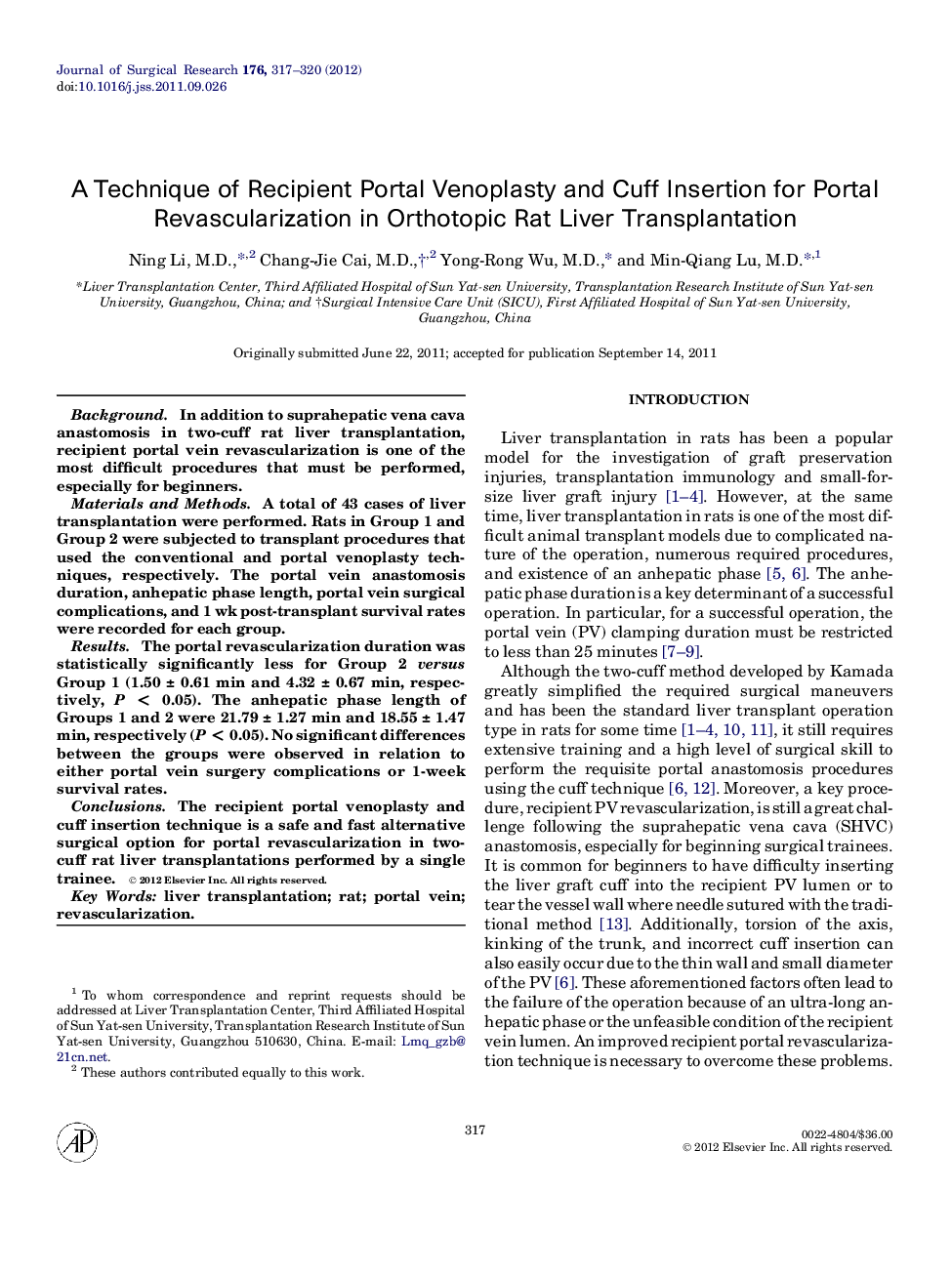| Article ID | Journal | Published Year | Pages | File Type |
|---|---|---|---|---|
| 4301297 | Journal of Surgical Research | 2012 | 4 Pages |
BackgroundIn addition to suprahepatic vena cava anastomosis in two-cuff rat liver transplantation, recipient portal vein revascularization is one of the most difficult procedures that must be performed, especially for beginners.Materials and MethodsA total of 43 cases of liver transplantation were performed. Rats in Group 1 and Group 2 were subjected to transplant procedures that used the conventional and portal venoplasty techniques, respectively. The portal vein anastomosis duration, anhepatic phase length, portal vein surgical complications, and 1 wk post-transplant survival rates were recorded for each group.ResultsThe portal revascularization duration was statistically significantly less for Group 2 versus Group 1 (1.50 ± 0.61 min and 4.32 ± 0.67 min, respectively, P < 0.05). The anhepatic phase length of Groups 1 and 2 were 21.79 ± 1.27 min and 18.55 ± 1.47 min, respectively (P < 0.05). No significant differences between the groups were observed in relation to either portal vein surgery complications or 1-week survival rates.ConclusionsThe recipient portal venoplasty and cuff insertion technique is a safe and fast alternative surgical option for portal revascularization in two-cuff rat liver transplantations performed by a single trainee.
